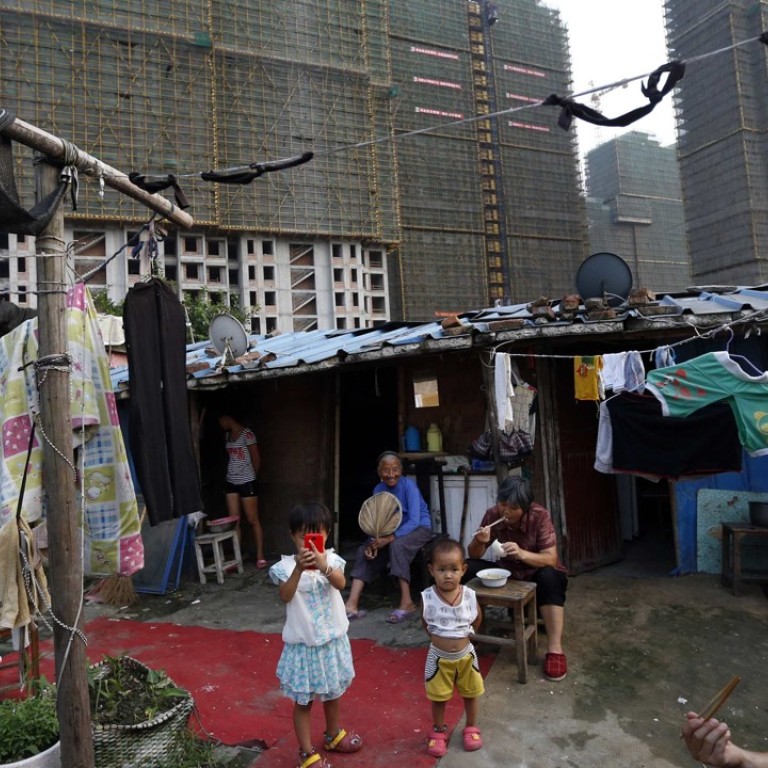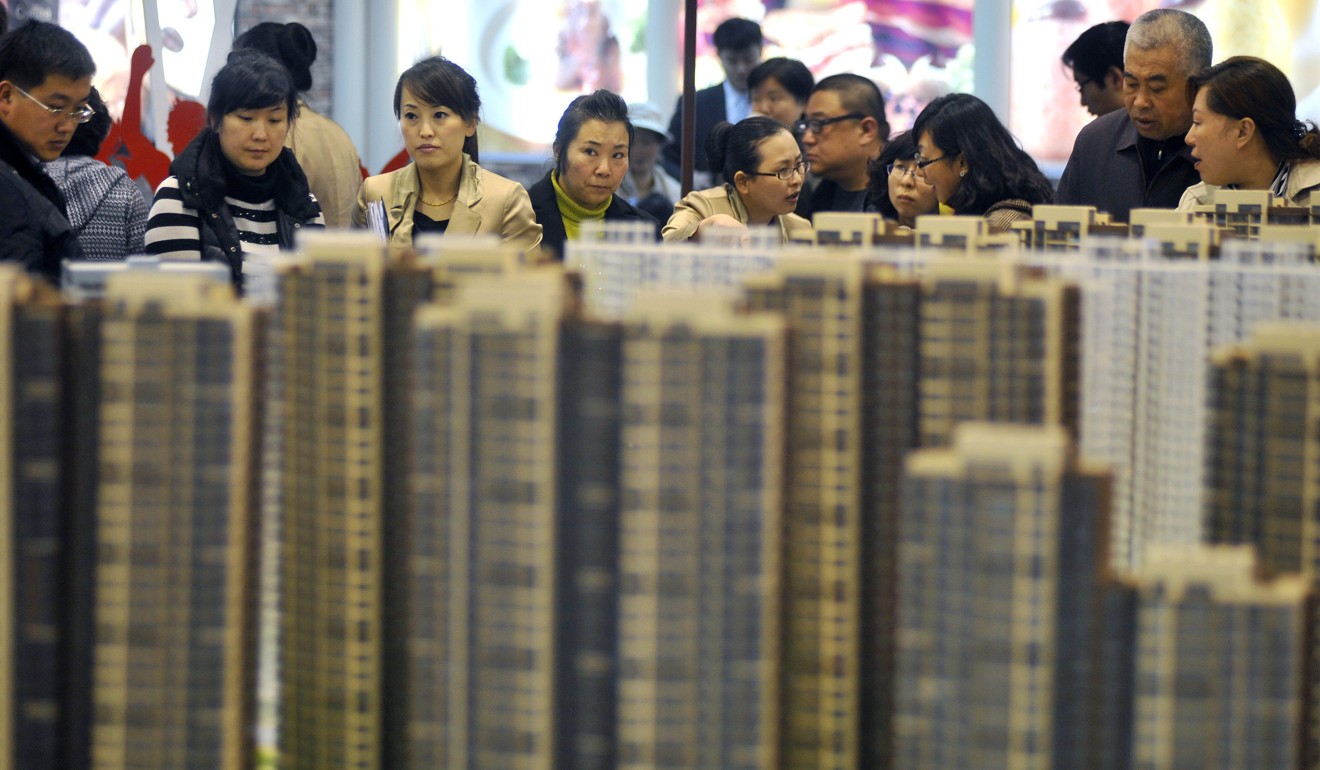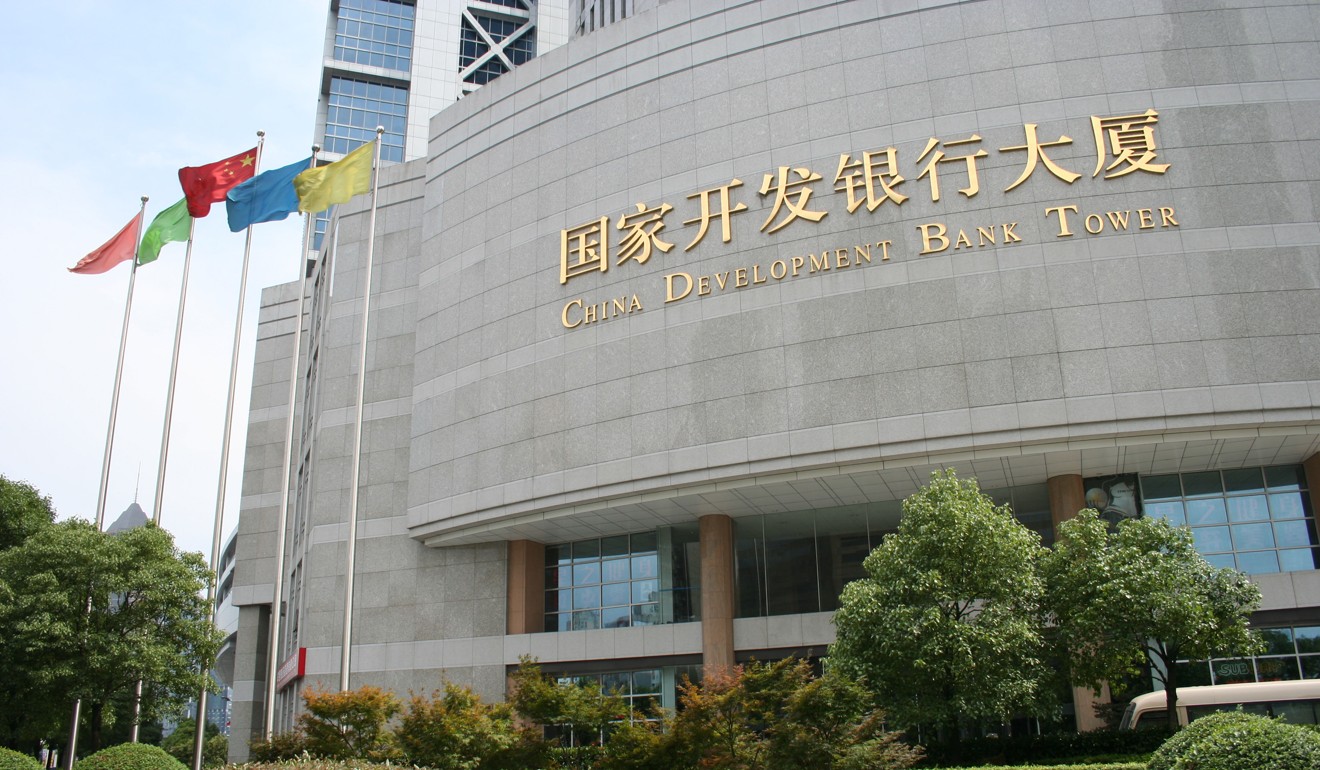
Is China cutting the financial lifeline for its massive city revival schemes?
China Development Bank says it will keep up its funding for shanty town redevelopment but there are signs the heyday may be over
A massive urban rehabilitation programme affecting millions of families and driving property investment in cities across China is expected to lose steam amid signs that Beijing is turning off the taps of a major funding source.
Hong Kong-listed Chinese property stocks fell this week on speculation that China Development Bank (CDB) would stop channelling cheap funding to local governments for “shanty town redevelopment”.
Over the last decade, local authorities have relied on the low-interest funding to realise a central government plan to upgrade living standards for poorer urban residents.
In a brief statement on Tuesday, CDB said it was still helping local governments with financing for the projects and it was doing this in an “orderly” manner.
But Li Yimin, an analyst with Shenwan Hongyuan Securities in Shanghai, wrote in a note that the statement signalled that CDB would be much more discreet and cautious in lending for the schemes.
The urban rehabilitation drive started out as a programme to move poor residents into new homes with indoor toilets and kitchens. Over the years it evolved into a scheme that compensated families in shanty areas for the demolition of their homes, with the families using the money to buy a flat on the open market.

The Chinese government said it planned to resettle 100 million people by 2020 and has developed 18 million flats in the past three years. It plans to built up another 15 million units by 2020, including 5.8 million units to be completed by the end of this year.
This investment is a key growth driver in China and a slowdown in funding into the programme risks adding to the pressures the country could feel from a trade war with the United States.
CDB supplied much of the cheap funding for the schemes, although local authorities also issued bonds or borrowed from other lenders.
It was able to charge a particularly low rate of interest because it was getting special funding from the central bank via a scheme launched in 2014 called “pledged supplementary lending”, a way of printing money to bankroll urban development plans.
CDB said it had extended a total of 3.4 trillion yuan (US$513 billion) in loans to fund shanty town development as the end of last year, helping to relocate 20 million households, or about as many as there are in Britain.
Brock Silvers, managing director of the Shanghai-based Kaiyuan Capital, said the shanty town projects and related local debt were based on a “model of inefficiency” that Beijing needed to address.
However, Silvers added that Beijing “may have missed its window” in containing the debt problem and “further progress may have to wait until recession and trade fears have receded”.
“Ironically, it may be [US President] Donald Trump who controls China’s debt policy for now,” he said.
While China’s shanty town development has helped many families move into more comfortable flats, it has also created an artificial demand for homes, pushed up property prices and created a steep rise in household debt.

Cities with a glut of properties have been particularly aggressive with the demolition compensation schemes. For example, Shenyang, the capital of rust-belt Liaoning province, boasted that all households relocated under “shanty town redevelopment” programme were compensated with cash in 2016. In a nationwide view, about 60 per cent of householders whose homes were demolished were compensated with cash.
Analysts said that the influx of cheap CDB money was one factor inflating property prices in small Chinese towns where demographic and economic fundamentals would not otherwise support such a rally.
And that is a big concern for a central government looking to cut risks in its financial system and vulnerabilities in its US$12 trillion economy.
“The runaway home prices in lower-tier cities are not supported by actual demand,” Bank of Communications senior analyst Liu Xuezhi said.
Wu Qi, senior researcher with the Beijing-based Pangoal Institution, said the shanty town redevelopment schemes had added to the local government debt mountain, directly counter to Beijing’s plans.
Wu said the central government was sending a clear message that there would be no easy money for stimulus and the authorities intended to divert capital into areas like small businesses and away from property speculation.

